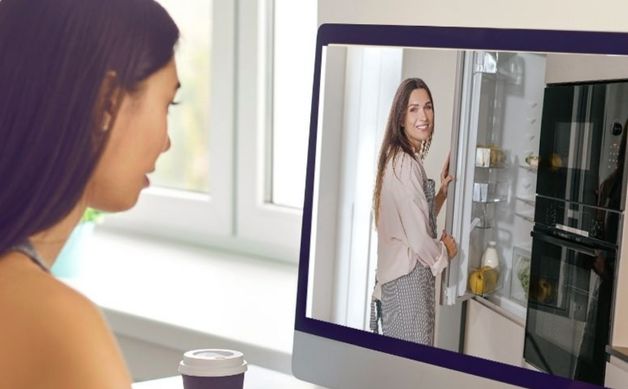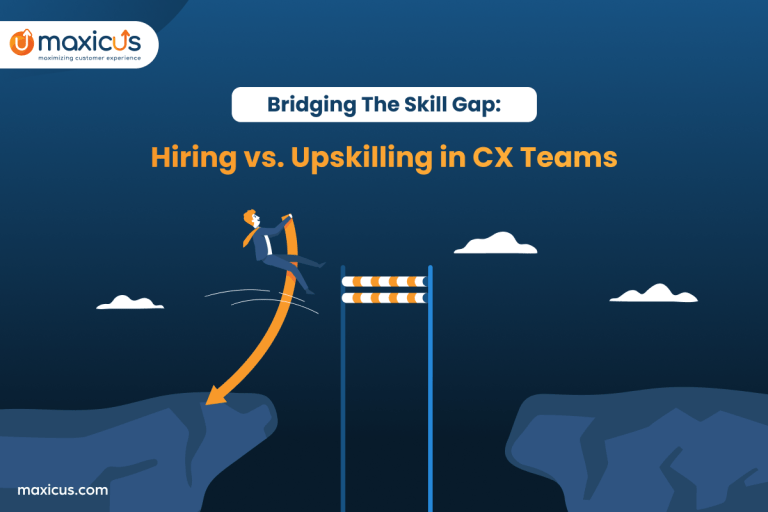Is Your Brand Leveraging Virtual Shopping Yet?
Virtual shopping bridges the gap between online and in-store, leading to human connection in the e-commerce space. The result is a truly all-channel experience that seamlessly merges online with physical shopping at actual retail locations.
But how can brands fill this gap and ensure that online shoppers get the same honest, personalized experience they get in the store? Let’s evaluate how your brand can satiate the virtual shopping appetite.
Virtual Clienteling
You may have noticed that the effects of lockdown are still surfacing, and the shift to virtual shopping favors brick-and-mortar retailers converting more online customers into the in-store flow. To overcome the commercial gap, the concept of virtual clienteling plays an important role.
Virtual clienteling is where your brand actively engages with potential buyers through digital media. With built-in clienteling, you can encourage buyers to choose products on their own timeline at a place of their choice. So, you can send text and email messages to stay top of the mind of your customers and share new product releases.
Virtual store associates act more than customer service staff and actively provide customers with the expected personalized services that they receive in-store. Your affiliates become brand ambassadors, establishing a strong relationship between the customer and the virtual store.
Virtual Commerce for the New-age Consumer
Technology-driven Clienteling
As the industry started facing unprecedented changes distancing shoppers from products, some technologies have emerged as powerful tools to help brands deliver superior online store experiences. For example, buying home appliances using augmented reality can be a great example of a virtual shopping experience. Here, smartphone cameras transform physical reality into augmentation. Through video calls, customers can see and experience the product-increased space.
In virtual shopping sessions, retail associates manage customer interactions digitally and individually with virtual shopping tools. Virtual clients apps are also available to measure and manage the performance of store associates. Analysis of measurement parameters such as chats, star ratings, average order receipts, revenue, etc., helps track employee performance and improve the process.

Phygital Customer Experience
Although phygital uses online and offline spaces instead of traditional digital experiences, its multichannel focus approach ensures that the customer’s shopping journey is familiar and fluid. As a result, phygital shopping is capable of giving customers a hands-on experience. Customers browse, see, and experience the products that interest them. Customers use online sessions with store associates to expand product choices before taking advantage of the actual store to complete the purchase. Or, they can even complete their purchase journey online. Therefore, customers gain confidence and more satisfaction through a curated retail shopping experience.
For example, the expert virtual assistant can educate online shoppers about the ingredients, uses, and effectiveness of a brand’s beauty product using online sessions involving video, live chat, text, etc.
According to a survey, it was found that “Buyers spend up to 23% more, and they are 85% more likely to make another transaction, which indicates the value of personalized conversations with each other.”
Many top brands have recognized the importance of phygital commerce, some of which are listed below:
- Associates interact with clients for personalized suggestions and custom advice, just as they do for individuals
- The presence of real-time human assistance, guiding you throughout your buying experience, not only helps answer your questions but also brings an emotional component to make sure your purchase decision is the right one
- Remembering and notifying customers that their favorite product is back in stock helps increase loyalty and lifetime value of customers through consecutive transactions
Get ready for a seamless blend of physical and digital experiences
The Role of Brand
A brand builds loyalty, not product. The brand’s goal is to help every customer find the perfect fit. Branding can now gain an edge over what traditional e-commerce sites promote by trading through virtual commerce. With a digital touch-driven virtual commerce store, you can deliver a personalized virtual shopping experience to your customers’ homes.
Today, social commerce is an opportunity for brands to regain their fortunes by gaining customer experience and customer relationships rather than selling on online portals. Price influences buying decisions, and your brand is considered later.
Customers like to see and experience the product before making a purchase. So, giving your customers a chance to see what a product looks like before they buy it is a ‘try before you buy’ trend that many brands are trying to use. Virtual visualization provides an innovative level of interaction for customers remotely. Instead of reading product features and specifications and figuring out what it will look like physically, the customers can now use a smart app and see for themselves on your virtual store.
Brands are now transforming their physical retail experience into a phygital form – a virtual mix of the physical and digital worlds. You can create a seamless online shopping journey from your online store to your physical retail location.
An Example of Brand in Virtual Commerce
Let’s look at how Jonathan Adler’s virtual showroom digital shopping experience works.
Jonathan Adler, an established brand in luxury home decor, sells its products through outlets in top cities including Chicago, Los Angeles, New York City, and London. In addition, it also does wholesale trade through more than 1,000 dealers. Jonathan Adler showrooms use virtual sales techniques to offer white-glove services to every online customer.
The design experts at Jonathan Adler use content formats of video, text, and chat to provide one-on-one services instantly, just as they do in-store. They answer buyers’ queries, offer advice on style, and share models and product details via video and images from the showroom space.
The result?
Offering virtual clients to customers has resulted in a 7-fold increase in conversions and doubled the average order value.
Transforming the global retail industry with virtual commerce
To Conclude
Giving a physical experience is not about delivering machines and technology into physical space. It’s more about adapting to the environment, integrating processes to establish a customized experience, and shaping a customer journey. The customer experience in the phygital context allows the brand to get closer to the customer and deliver a first-hand perspective on the product. With phygital commerce, the possibilities are innumerable. The union of physical and digital in a cohesive environment will create an intelligent customer journey and help your brand gain a loyal customers for a lifetime.










